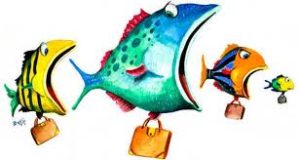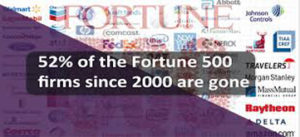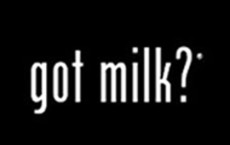Strategic Solutions



Either you have a winning strategy, or you’re part of someone else’s.
The need to respond to change in order to survive is not new. Charles Darwin, writing in the mid 1800’s, could very well have been studying today’s 21st century organizations when he concluded, “It is not the strongest of the species that survive, but the ones most responsive to change.”
What is new however, is the aggressive pace, unanticipated pressure, variety, and severity of the changes. Categories are disappearing and entire industries are collapsing in disarray. Markets, media, consumers, and customers are now constantly changing. Disruptive change is now the norm. And seemingly overnight, the largest Fortune 500 firms, and the small town “mom and pop” businesses can all disappear.
A long-established organization can find their very existence threatened:
- The go-to-market strategies which succeeded in the past are rendered obsolete;
- The new competitors play by their own rules, requiring non-traditional responses;
- Brand names which were trusted assets, are suddenly “old-fashioned” liabilities.
Organizations have realized the skills and demands of day-to-day internal management are very different from those needed to anticipate and respond to the relentless external change. The old solutions and approaches simply won’t work. New competitors and new markets require fresh thinking, new ideas, strategies and marketing. The strategic vision, expertise, and required perspective can now best be found outside their own organizations.

The “got milk?” campaign
Prior to 1998, the “got milk?” and “milk mustache” campaigns won creative awards, but milk sales in the U.S. continued to decline across every consumer segment. But by boldly changing strategy, and then unifying the two campaigns, milk sales in the US actually grew in 1999. And by focusing spending exclusively against kid and teen targets, those two segments showed per capita growth as quickly as calendar year 2000.
Read More

B2B Customer Segmentation Strategy
In 2008, key executives at a top 25 3PL worried changing trends in the global marketplace threatened their firm’s long term viability. There were strong indications that the combination of U.S. corporate mergers, increased supplier consolidation, and the emergence of much larger multi-national competitors would render its traditional business strategy obsolete. The solution was a Customer Segmentation Strategy based on customer profitability and client capability. This yielded record revenues and profits in 2009 and then again in 2010.
Read More

Expand The Category
Prior to 2001, RC (radio controlled) sports participation was limited by retail availability, high price points, and a very steep learning curve. Category leader Horizon Hobby needed to expand participation in the category. The strategic solution was the creation and introduction of the HobbyZone category entry Brand. The HobbyZone line was moderately priced, easy-to-use, available for purchase in mass and big box stores, and bridged the gap between RC “sports” and toys.
Read More

A New Business Model
In 2019 a major Child Care Agency was facing a dilemma; Their Iceberg Was Melting. Nearly every element of their previously successful business model was eroding. Demand for services was at an all-time high, while funding was at a 12-year low. The situation required a reassessment of their entire business model. This bold leap allowed the Agency to reduce operating costs while increasing efficiency and effectiveness.

